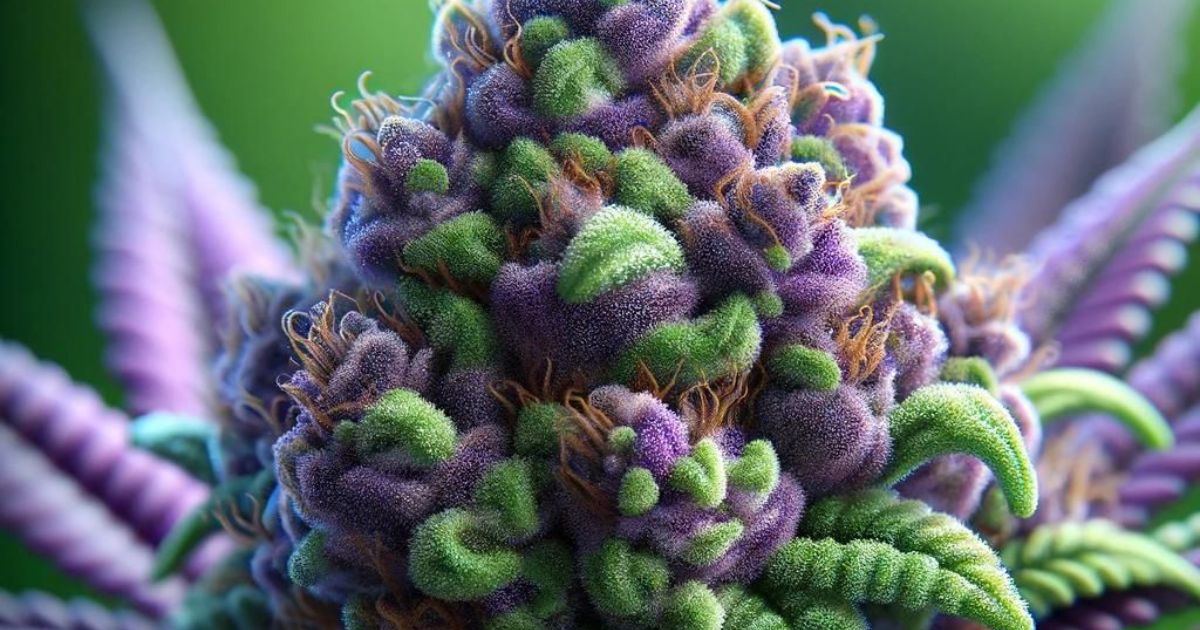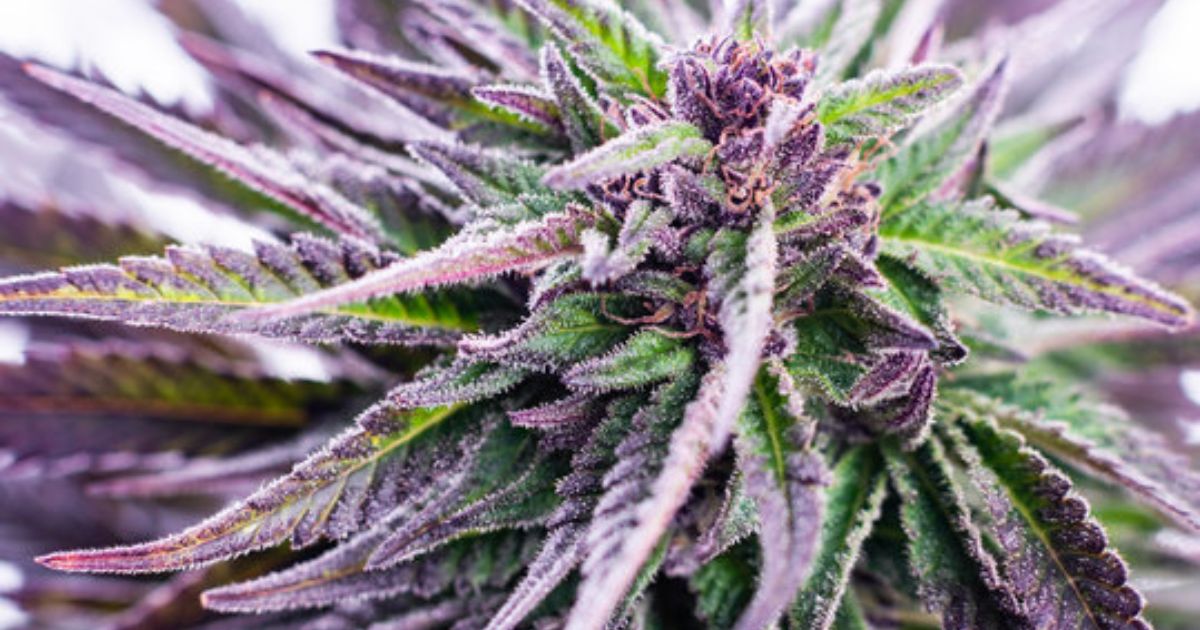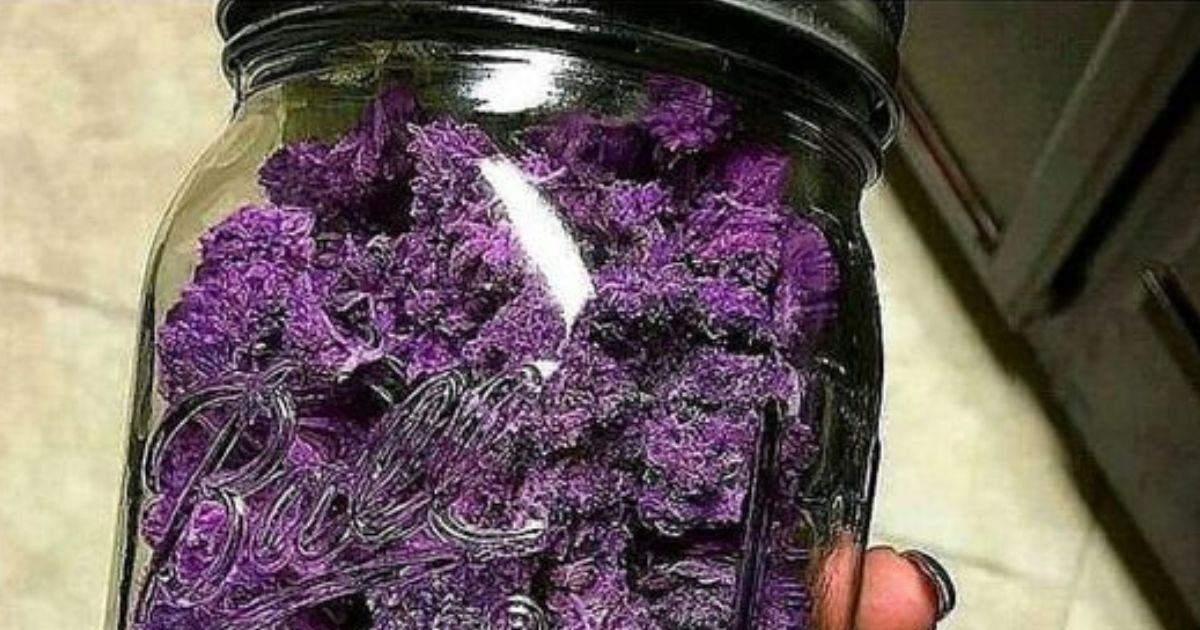Purple cannabis has an undeniable allure. Whether it’s the deep, royal shades of Granddaddy Purple, the vibrant tones of Purple Haze, or the frosty lavender buds of Purple Kush, these strains dominate social media feeds, dispensary menus, and even pop culture references. Purple weed isn’t just a visual treat; it has become a symbol of quality, exclusivity, and potency in the eyes of many cannabis enthusiasts.But here’s the thing: not everything you think you know about purple cannabis is true. Some people believe purple buds are more potent or more exotic. Others think any cannabis plant can turn purple with the right tricks. There’s a lot of misinformation floating around, so it’s time to dig deeper.
In this guide, we’ll explore what makes weed turn purple, which strains naturally carry the color, whether purple on weed is truly more potent, and how growers achieve those stunning hues. By the end, you’ll have a clear understanding of the truth behind purple weed strains and why the color is more science than magic.
What Makes Weed Turn Purple?

Before we get into strain names and myths, let’s talk about the science. The purple on weed color in cannabis comes from compounds called anthocyanins, natural pigments also found in foods like blueberries, red cabbage, and eggplant.Anthocyanins belong to the flavonoid family, and their job is simple: How To Get The Best Grand Daddy Purple Buds they add color to plants and sometimes help protect them from UV rays or harsh weather conditions.
But here’s where it gets interesting:
- Genetics is the most significant factor. Not every cannabis strain has enough anthocyanins to produce purple buds. Strains that naturally express these pigments are more likely to turn purple, especially under the right conditions.
- Temperature matters. Cool nighttime temperatures can enhance anthocyanin production. This is why outdoor-grown cannabis in cooler climates often has deeper colors.
- pH levels also play a role. Just like in hydrangeas, the soil’s pH can slightly influence color expression, although it’s less significant than genetics.
Bottom line: purple plants leaves is not a sign of mold, chemicals, or dye (at least not in legitimate, responsibly grown weed). It’s a natural expression of plant genetics, but only if those genetics allow it.
Popular Purple Weed Strains You Should Know
Now that we’ve covered why cannabis can turn purple, let’s talk about some of the most famous purple strains, the ones that built the reputation of purple weed in the first place.
1. Granddaddy Purple (GDP)
Arguably the most iconic purple strain of all time, Granddaddy Purple was introduced in California in the early 2000s by breeder Ken Estes. With its heavy indica effects, sweet grape-and-berry aroma, and striking violet buds, GDP is often called the “gold standard” of purple cannabis.
Effects: Relaxing, sedating, perfect for nighttime use.
Why it’s purple: Strong anthocyanin-rich genetics and cooler temps during flowering.
2. Purple Haze
Immortalized by Jimi Hendrix’s 1967 song, Purple Haze is a sativa-dominant strain known for its uplifting, psychedelic buzz. While not every Purple Haze batch comes out deeply purple, when grown correctly, Tips for Growing the Popular it can showcase stunning lavender hues.
Effects: Euphoric, energetic, creative.
Why it’s purple: Genetics combined with careful cultivation.
3. Purple Kush
An indica powerhouse that originated in California, Purple Afghani and Hindu Kush are crossed to create Purple Kush. It’s deeply relaxing, ideal for stress relief and sleep, and often displays rich purple tones that delight connoisseurs.
Effects: Heavy body high, great for pain relief.
Why it’s purple: Naturally strong anthocyanin production.
4. Purple Urkle
A classic strain with mysterious origins, Purple Urkle brings a sweet, grapey aroma and a relaxing, couch-locking high. Exploring The Benefits Of Weed And Cannabis It’s one of the strains that helped shape California’s purple cannabis scene.
Effects: Calm, sleepy, great for evenings.
Why it’s purple: Genetics and proper curing enhance the deep color.
5. Others Worth Mentioning:
- Mendocino Purps – earthy, sweet, and visually stunning.
- Purple Punch – a newer strain that mixes sweetness with knockout effects.
These strains didn’t just “turn purple” because of some grower’s trick; they’re genetically predisposed to showcase those colors.
Does Purple Weed Mean It’s Stronger?
Here’s one of the biggest misconceptions about purple cannabis: that color equals potency.
Many people assume that purple buds automatically have higher THC levels or hit harder. But here’s the truth:
- THC content isn’t linked to color. Purple weed can be strong or weak, just like green weed. The anthocyanins that cause purple coloring have no effect on THC levels.
- Potency depends on genetics, not hue. What is the Candyland Strain Some purple strains are heavy indicas that will knock you out, while others are milder and more uplifting.
Key takeaway: Don’t judge purple plants leaves cannabis by color alone. A vibrant purple bud might look luxurious, but if the strain itself isn’t high-THC or wasn’t grown well, it won’t be more potent than a regular green bud.
How to Grow Purple Cannabis (Tips for Growers)

If you’re a grower or just curious, here’s how purple buds are achieved naturally (no, we’re not talking about spray paint or fake dye!).
1. Choose the Right Genetics
The first and most crucial step is picking a strain that can turn purple. Strains like Granddaddy Purple, Purple Kush, magiccann canna gummies and Purple Punch are genetically wired to show purple hues.
2. Adjust Temperatures (Carefully)
Cooler nighttime temperatures (around 50–60°F or 10–15°C) can bring out the purple. But be careful, too much cold can stress the plant and hurt yields.
3. Manage Nutrients
A well-balanced nutrient mix ensures healthy plants. Too much nitrogen can keep buds green, while proper nutrient management can allow anthocyanins to shine.
4. pH Levels Matter (Slightly)
A slightly acidic environment can sometimes bring out deeper colors, but pH alone won’t make a green strain purple.
5. Proper Drying and Curing
Even after harvest, how buds are dried and cured affects how purple they look. A good cure locks in color and aroma.
What NOT to do:
- Don’t freeze your plants. This can kill them.
- Don’t use food dye or chemicals. Real purple weed should be natural.
Myths & Misconceptions About Purple Weed
Purple weed might be beautiful, but it’s also surrounded by myths. Let’s bust a few:
Myth 1: All weeds can turn purple if you “trick” them.
Not true. Only strains with anthocyanin-rich genetics will reliably turn purple.
Myth 2: Purple weed is always more potent.
False. Color doesn’t equal THC levels.
Myth 3: Purple weed is rare and therefore overpriced.
Purple strains are popular, but they’re not necessarily rare. hempushpa syrup uses in marathi In fact, many dispensaries stock multiple purple strains year-round.
Myth 4: Purple weed tastes different because of the color.
The flavor you love (grape, berry, sweet notes) often comes from terpenes, not the purple pigment itself.
Why Do People Love Purple Weed So Much?
There’s no denying it, purple weed has a cultural pull. It’s not just about color; it’s about what that color represents:
- Luxury & Exclusivity: Purple buds look rare and expensive, which makes them appealing.
- Instagram-Worthy Aesthetics: Let’s be honest, purple weed photographs beautifully.
- Pop Culture Influence: From rap lyrics to stoner films, purple weed has been glamorized for decades.
- Flavor Expectations: Many purple strains have sweet, fruity terpenes (like grape or berry), so people associate the color with dessert-like flavors.
Is Purple Weed Worth the Hype?

That depends on your expectations. If you’re chasing potency, you shouldn’t assume purple weed is stronger. But if you’re after visual appeal, sweet flavors, and the novelty factor, purple strains are absolutely worth trying.For growers, Royal Queen Seeds purple strains are a chance to create eye-catching buds that stand out on shelves. For smokers, they’re a reminder that cannabis is not just about the high; it’s about the whole sensory experience.
Conclusion
Purple weed strains have captured the imagination of the cannabis community for decades, but the truth is less mysterious than the hype suggests. The color comes from anthocyanins, natural pigments influenced by genetics and growing conditions, not magic, and not dye.Some strains, like Granddaddy Purple or Purple Kush, are genetically wired to showcase rich purple hues. Others may display faint lavender tones under the right conditions. But one thing is clear: color doesn’t equal strength.
So next time you see those vibrant purple nugs, admire them for their beauty, but remember that great cannabis is about genetics, cultivation, and curing, not just the color of the buds.
FAQ
What causes weeds to turn purple?
Natural pigments called anthocyanins are responsible for purple coloring, which is also influenced by genetics and cooler temperatures during flowering.
Is purple weed more potent?
No. The purple color has nothing to do with THC content; it’s all about genetics and conditions.
Can any weed plant be made purple?
Not really. Only strains with strong anthocyanin genetics can reliably turn purple.
Is purple weed safe to smoke?
Yes, as long as it’s grown naturally. Avoid any buds that look unnaturally dyed.
Why is purple weed more expensive?
Sometimes dispensaries charge more because of their rarity and visual appeal, but the color itself doesn’t justify a higher price.




